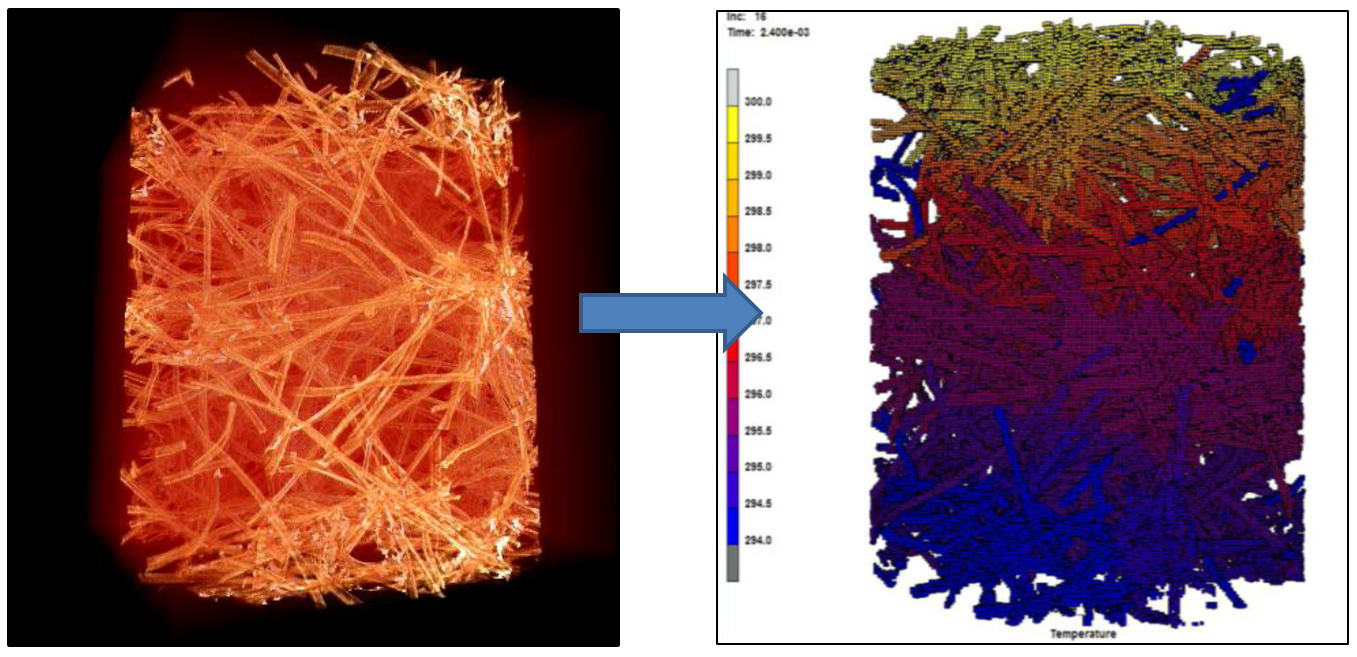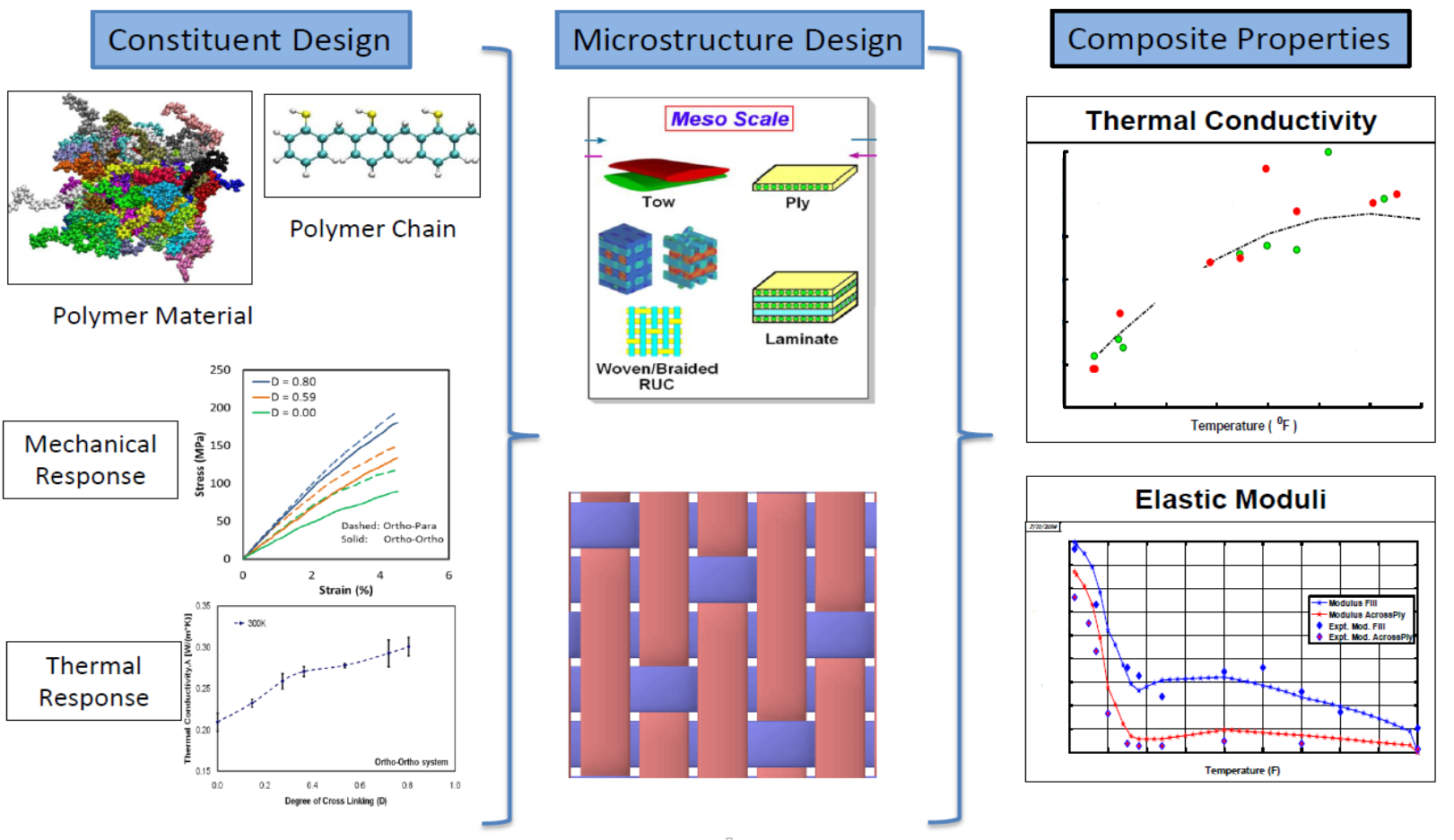Advanced materials are critical to NASA missions and the U.S. economy, but material discovery to application can take decades. Material design and performance analysis using computer modeling and simulation will dramatically reduce the time between discovery and application. NASA has interdisciplinary teams: physicists, chemists, material scientists and engineers, to tackle challenging problems in computational material science.
The Thermal Protection Materials Branch has deep expertise in a range of modeling methods from computational chemistry to atomistic simulations to microstructure and macroscale modeling. Modeling/simulations are tightly coupled to experiments for characterization and validation. Multi-scale modeling of materials has been applied successfully to a range of materials including polymers, ceramics, metals, composites, etc.
























